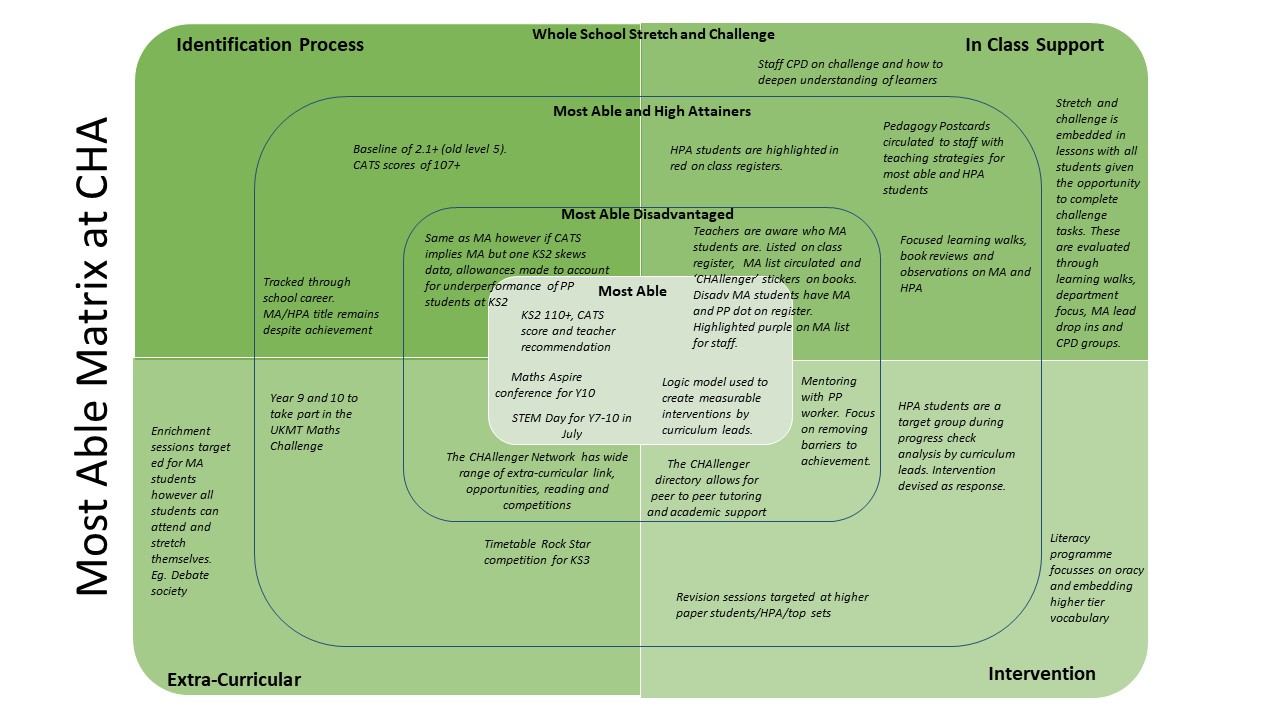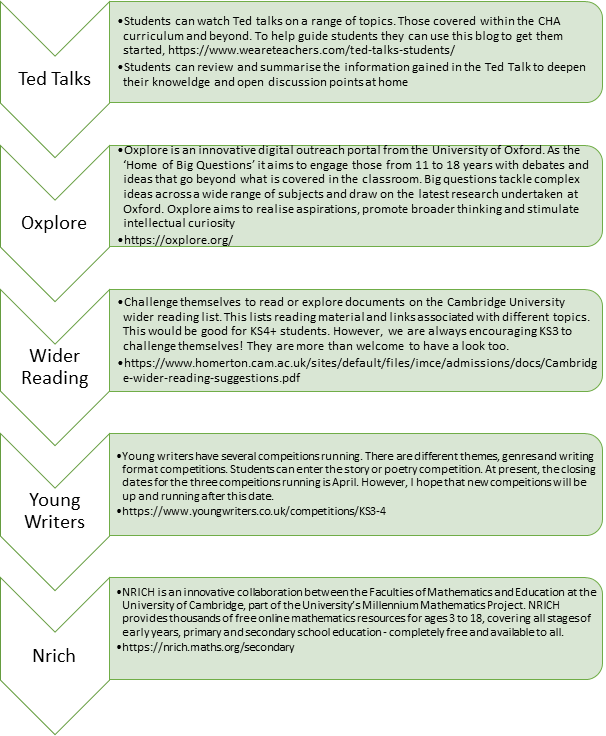More/Most Able
Chiltern Hills Academy Most Able Students provision takes full account of Ofsted’s most recent report published in June 2013 on ‘The most able students: Are they doing as well as they should in our non-selective secondary schools?’ and the subsequent review report in March 2015. Ofsted cites a report on ‘Educating the highly able’ published by the Sutton Trust in 2012 which refers to how: ‘Ensuring that the brightest pupils fulfil their potential goes straight to the heart of social mobility, of basic fairness and economic efficiency.’
Definitions in the June 2013 report, Ofsted reviewed the standard use of definitions surrounding what were previously known as Gifted and Talented students. This policy is a result of our review of current research and as such refers to “most able” students throughout. The term most able is only referring to those identified as being academically most able and not those identified as being exceptionally talented within, for example, the creative and performing arts or sports. The term most able students replace all previous terms such as Gifted & Talented, able children etc. At Chiltern Hills Academy these students are called ‘CHAllengers’.
Aims
- Maintain a culture and ethos that champions the needs of most able students
- Help most able students to flourish and leave school with the best qualifications
- Raise awareness among staff, governors and students about the needs of most able students
- Encourage, support and evaluate the progress of most able students
Who are the Most Able Students?
In its June 2013 report, ‘most able’ was defined by Ofsted as the brightest students starting secondary school in Year 7 attaining Level 5 or above or having the potential to attain Level 5 and above, in English (reading and writing) and/or mathematics at the end of Key Stage 2. Some students who are new to the country and are learning English as an additional language, for example, might not have attained Level 5 or beyond at the end of Key Stage 2 but have the potential to achieve it. Since the introduction of new end of Key Stage assessment mechanisms, the Department for Education now identifies that students counted as “achieving at a higher standard” at KS2 must have a high scaled score of 110 or more in reading and maths and have been teacher assessed in writing as “working at greater depth within the expected standard”. This benchmark is used at Chiltern Hills Academy to identify our most able students, combined with CATs data, generally a score over 120.
The DfE defines most able student as a cohort of between 5% and 10% of the school’s population. Chiltern Hills Academy identifies and allocates most able students according to KS2 data at the end of Year 6 and by using CAT tests and teacher recommendations. Within the first term of Year 7 most able students are identified.
All relevant information identifying most able students at Chiltern Hills Academy is immediately registered on SIMS so that teachers can respond appropriately. A comprehensive register of these students is circulated regularly to all teachers.

Beyond the Curriculum

